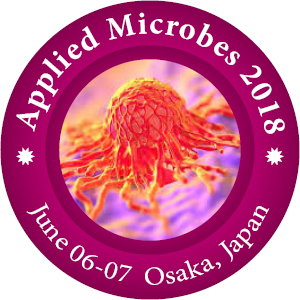
Nasreen S. Munshi
Nirma University, India
Title: Bioremediation of aromatic hydrocarbon pollutants by the most abundant bacterial strain in industrial wastewater: Pseudomonas citronellolis
Biography
Biography: Nasreen S. Munshi
Abstract
Gujarat and Maharashtra are the brightest jewels in India’s industrial crown. But impressive industrial development escalated along with environmental pollution. Hydrocarbon compounds comprise major pollutants from industries such as, petroleum, chemical, textile, food, automobile and oil or agricultural runoff containing pesticides or other toxic organic matter. Environmental pollution caused by petro-chemical industries and oil spills are of great concern, hence it is always very important to treat the same at point source. Development of efficient bioremediation process of such compounds at industrial scale is a major challenge. Many microbial strains are reported for their degradation ability at laboratory scale. However they mostly face failures at large scale due to lower survival in competitive environment of industrial effluents and toxicity of various pollutants. Native microbial community of effluent may be looked for bioremediation solution for industrial wastewater. The present study was undertaken to explore and understand the current status of microbial community present in common effluents of South Gujarat industrial zone for isolation of the most abundant bacteria and bioremediation of aromatic hydrocarbon. Nine CETPs located at South Gujarat were explored for microbial community analysis. Sixty bacterial cultures were isolated on basis of abundancy and were compared using 16S rDNA restriction profiling (ARDRA). One of the screened isolates, also one of the most abundant bacteria was identified as Pseudomonas citronellolis, with 30.02% abundance in wastewater effluents. This bacterium was able to degrade 1 and 5 mM of the model hydrocarbon compound, sodium benzoate by 97.05% and 98.6% respectively within 24 h. Using statistical tools for designing experiments, the bioremediation bioprocess was optimized and later scaled up to 100 l of CETP wastewater treatment capacity. As this bacterium was able to degrade a model hydrocarbon, it could be applied for field application further for development of suitable consortium.

